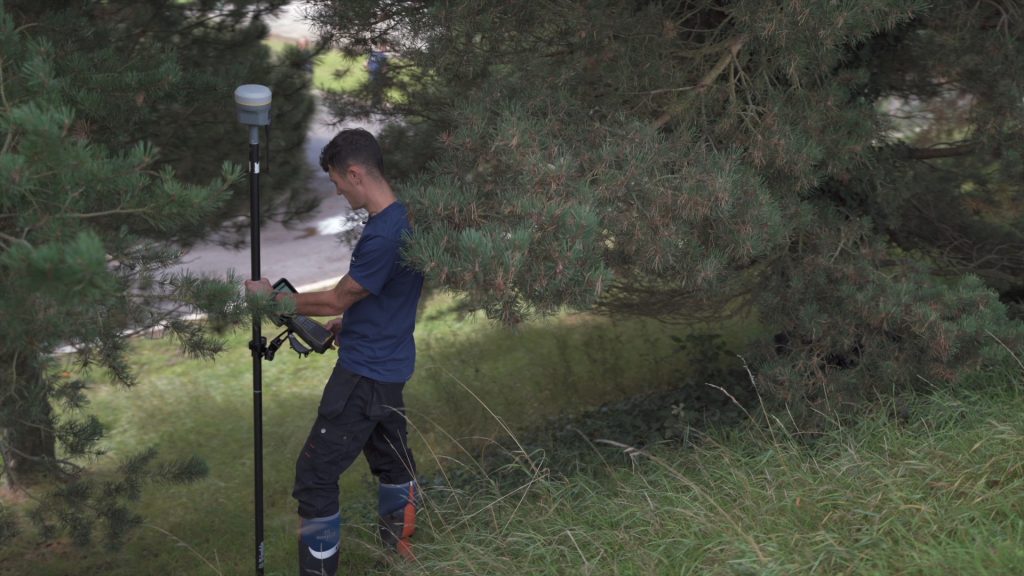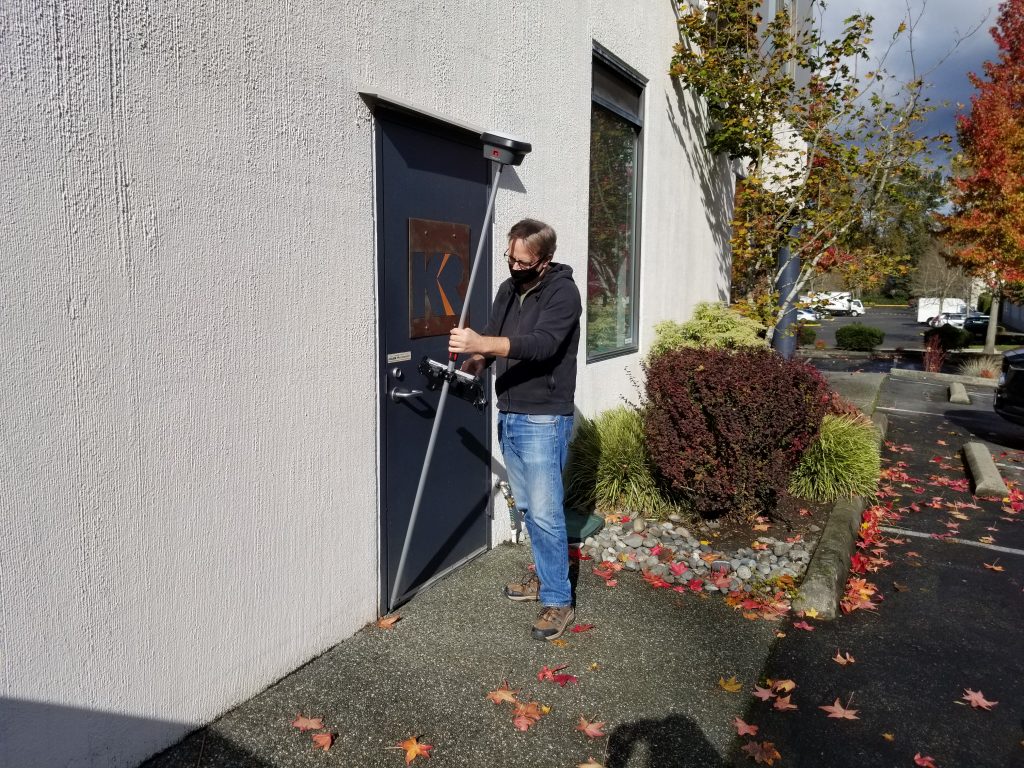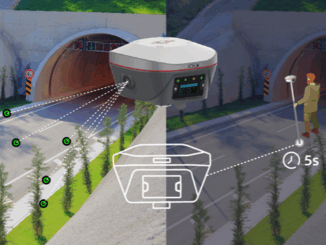
Some of the most profound gains in the performance of high-precision GNSS have come in just the past few years—no wonder users are impressed. And especially in contrast to legacy gear.
“Mind blowing!”, “Day and night different!”, “Blown away!”. These are some of the reactions from users of high-precision GNSS systems, like surveying rovers, when they try out some of the newest gear. Are the gains in performance that dramatic? There have undeniably been substantial gains, and advances the encompassing technologies, but a lot of the difference is a matter of perspective. When suddenly stepping up from at least a decade of an effective plateau in high-precision GNSS, to a multi-elemental new wave makes the new gear seem almost miraculous. What are the contributing elements of this new GNSS wave? And how did they all seem to converge in that past few years?
- Modernization the satellite systems
- New constellations
- Newer and better positioning engines
- The ‘vacuum cleaner demo’ effect

Incremental Improvements
As the Beatles song goes, things have been getting better all the time. The satellite navigation constellations, like the U.S. Navstar system (known generically as “GPS”) have steadily improved since the first system was launch over 40 years ago. There have been improvements and modernization of successive generations of satellite vehicles, and components thereof, and with new and improved signals added. Tracking from the ground segment has improved, as has the resultant clock and orbit determinations that are so essential for high precision applications. And the geodesy, the precise models of the earth have improved, like the gravity models essential to derive orthometric elevations from GPS.
While the default precision of uncorrected GPS, like on phones, has also benefitted from these incremental improvements, the precision of such applications (if expressed at all) is in meters. High precision needs centimeters: reliable repeatable, and rapid—this is no easy lift and traditionally comes at a high cost. Public, private, and academic engineering teams had figured out, even from early days, how to leverage the various signals and codes to wring the last few centimeters out of this free amenity. Many different augmentation solutions have been developed for different applications in navigation and positioning. You are probably familiar with terms like DGPS, PPP, SBAS, post-processed differential GPS, RTK, RTN. VRS, MAC, etc.
In terms of high precision applications for GPS, like surveying, mapping, construction, agriculture, and more, a certain benchmark was reached when the first dual-frequency real-time kinematic (RTK) enabled rovers and bases hit the market in 1996, and network RTK (RTN) by 1999—precision in the order of a cm was now achievable in real-time.
There has been somewhat of a plateau since then. For the most part, a rover, from say 2001, that could get a cm with RTK then, could very well do it now. Quite a few users are adamant about that and say they do not see any point in buying the new gear. The thing is though, there are limitations to those legacy systems that folks just kind of got used to, and maybe have missed out on opportunities to save a lot more time and money.
Chief among these limitations is where you can work. In limited sky view locations, like under tree canopy, in urban canyons, and around worksite obstructions and multipath hazards, etc. With only one constellation of satellites, the threshold where you struggled with limited sky, gave up exasperated, and had to pull out some terrestrial gear like a surveyor’s total station or a tape measure to finish the job came a lot sooner than today. What has made the difference is that the number of GNSS satellites has nearly quadrupled since the early days.

New and improved constellations
For decades, GPS satellites transmitted limited signals; L1 and L2 being the mainstay of the high precision solutions. As new generations (blocks) of GPS satellites are launched, new signals have, and continue to be added; L2C, L5, and others in the works. Third signal processing can be a boon to GNSS engineers, providing additional ways to develop algorithms to improve quality, confidence in, and repeatability of solutions.
And GPS is no longer alone. The European Galileo constellation reached it global coverage goal in 2020, and with multiple signals: E1, E5a, E5b, E5 AltBOC, and E6. Russia’s Glonass constellation has been around for decades, though there were periods of questionable quality. That has been resolved and there is reliable global coverage with 2 signals, and some progress in adding a third signal. China’s BeiDou expanded rapidly, through 3 constellations in just over a decade, reaching 3 signal global coverage in 2020. Japan’s QZSS and India’s Navic have enhanced regional coverage as well. More is better, and recent years have seen significant gains from this rapid expansion.
A key point to keep in mind about using multiple constellations: if you are doing RTK, network RTK (RTN), or precise point positioning (PPP), if the base, RTN, or PPP service is not sending you corrections or messages that support multiple constellations, your rover will not utilize those. You might see your rover “track” four constellations, but if the augmentation source, like your base is an older one-or-two constellation model, you cannot use them.
GNSS Mix and Match
When you have so many signals, including the newer, stronger ones, high precision GNSS positioning developers and manufacturers are been able to teach receivers to deftly mix and match sats and signals. Some can mix as few as two sats from any constellation with any number of combinations from others (to make up at least 5 or 6), but with almost no limit on the total used (two minimum from each constellation used to resolve the respective clock). Depending on the GNSS engine, they can mix, match, evaluate which to use, accept reject, build an optimal sat geometry, and help minimize the effects of multipath. The sky is the limit… OK, that was a cheesy statement, but really it is.
It used to be that the biggest gain from having many satellites in view was to improve the chances that you could see the minimum number of satellites to get a fixed solution, especially in areas of limited sky view like urban canyons and under tree canopy. For years, when limited to just GPS, or GPS+Glonass, there was a lot of competition among manufacturers and (and brand loyalists) to claim superiority under canopy. The reality was that nearly all high-end modern rovers (developed at similar times) could perform pretty much the same as any others—no magic bullets. But it was amusing to see the posturing and sometimes over-the-top marketing.
Likewise, many of the best practices for high-precision work were developed during the days of limited satellites. For instance, the practice of doing additional observations on a different day, or different time of day to account for what some people called “constellation drift” (though that is a bit of a misnomer). The idea was, considering the limited sats, to have different geometries at different times. But now with nearly quadruple the sats, spread around the sky at any given time, that is almost moot. But for those users who wish to, or are required to, do different geometries, some developers have added features to the field controller software to select from subsets of the satellites in view, in different geometries. This can obviate the need to add the traditional time gap.
Do the new engines simply help you work in more places, or do they improve precision? The former for certain, and to some degree the latter. With more sats and signals from four constellations, far more than you would have gotten with one or two constellations, you have more of chance to achieve an optimal geometry. Users are experiencing improved DOP, faster fix times and better performance in multipath-hazard environments. You should test this for yourself, but I am seeing small but noticeable improvements in precision and repeatability when comparing head-to-head with older generation gear.
But all of this “loading your plate at the GNSS buffet” comes at a premium in processing. The newest wave of high precision GNSS deals with this by giving you a bigger plate.

The 4th Wave
I tend to view high precision GNSS development, like that of surveying rovers, as having gone through four phases. The first was the earliest, mostly defense related, development of GPS field receivers. The second was development of receivers for civilian uses, like Trimble, Magnavox, Texas Instruments, and more. Single and dual frequency receivers revolutionized applications for geodesy, surveying, mapping, construction, and scientific studies; like for plate tectonics. Most developers would go on to add Glonass (once it became viable), making these truly GNSS units.
During the third wave, the market was dominated by a handful of manufacturers, who also sold OEM (original equipment manufacturer) boards to third party manufacturers. There appeared to be dozens of new brands, but in reality, the vast majority of say all surveying rovers had boards in them from 3-4 manufacturers. There were often enhancements and cool features, and this period saw widespread adoption for many applications, but in many ways things kind of plateaued. The challenge of achieving true multi-constellation and multi-signal Nirvana with gear from this wave was that they did not have the horsepower. The fourth, current wave sees very powerful receivers, running a whole new generation of smarter and faster GNSS engines.
While the following is not an endorsement of any particular brand or model, it is fair to give some examples. For instance, the current flagship survey rovers from Trimble, Leica GeoSystems, Topcon, and more, have their latest generation of GNSS/RTK engines inside. Like Leica’s GS18T/I, that have what they call a “self-learning” engines, Topcon’s HR and VR models, and Trimble’s R12(and R21i). The latter is a good example of how development progressed: their previous flagship rover, the R10, could track and use multiple constellations in a limited manner, so they developed a new engine called “ProPoint”, but it needed more processing power. So, they added more in the R12-2 to handle a ProPoint upgrade, as a precursor to the R12.
In the meantime, several other GNSS manufacturers who produced their own boards, like Hemisphere brought new 4th wave models out, and through their partners and OEM customers. Some 3rd party manufacturers, who began using boards from the prominent OEM sources, have begun to develop their own boards, like CHC Navigation, and have put them in some of their newest models. Then there are new entrants, like Tersus GNSS who started from scratch but went directly to the 4th wave; powerful engines that can mine and process many sats and signals. The high-precision, 4th wave GNSS cat is out of the bag. Performance-wise, there is a lot of competition, and some interesting developments in affordability, especially for growing global markets. Inexpensive does not necessarily mean “cheap” anymore.
To keep moving forward, the traditional key players have been adding new features to improve field efficiency and work more safety—this has kept the market interesting. Some of these new features, like no-calibration tilt, and camera-based offset measurements, enable use in even more sky limited conditions. But some of these were only really technically feasible because of things like the improved engines and additional on-board processing power. Cool begat cooler.
I have test driven many of the new models, and without any doubt, the difference in performance from gear only a few years older is substantial. Here are a few examples: The GS18T (and a new model with camera-based offsets, the GS18I), Trimble’s R12i, the Bad Elf Flex (with a Hemisphere board inside), and the Tersus David and flagship Oscar (that offers no-calibration tilt on one variant)—and there are others.

The Shock of Discovery
Something new will mostly impress. But when the new is substantially cooler, then folks can get caught up in the moment and buy the first one they see. In the mid-20th Century, folks sold many things door-to-door, like vacuum cleaners. The salespeople would offer a head-to-head test between your old vacuum and their new turbo-thrusted super vac. Old ones lose suction over time, and chances are that the first salesperson who makes it through your front door will provide an impressive demonstration.
Same goes for GNSS rovers. The contrast can be quite shock; seeing the difference between your old gear and a new model can often lead to the conclusion that “this one is the best!”. The is a lot of “best” out there, so much great gear. Then it is down to familiarity with software, how it can integrate with your other surveying gear, what additional features could improve workflows, training, and support needs.
But not everyone is so easily impressed. Again, the basic performance of even some decades-old rovers, in clear sky and with minimal satellites can be, for the most part, as high-precision as the new wave, and some users see no point in upgrading. I remember posting a pic on a surveying forum of a new rover in what I call one of my “multipath hell” test locations: under a steel tower. It checked in to a point that had been confirmed with a total station and digital level (several of the newest models nailed the position, where older rovers never could). Some of the comments were colorful metaphor (expletive) ridden rantings. Ok, I was also skeptical until I tried it…. The Bowie song Changes comes to mind.
Fair enough, we all get used to what we have, but often that comes at the price of acquiescing to limitations in legacy gear we might not fully comprehend until a new model is test driven, and in environments you might have never considered working in before. I’d suggest looking at more than one, you will likely not be disappointed.





Be the first to comment